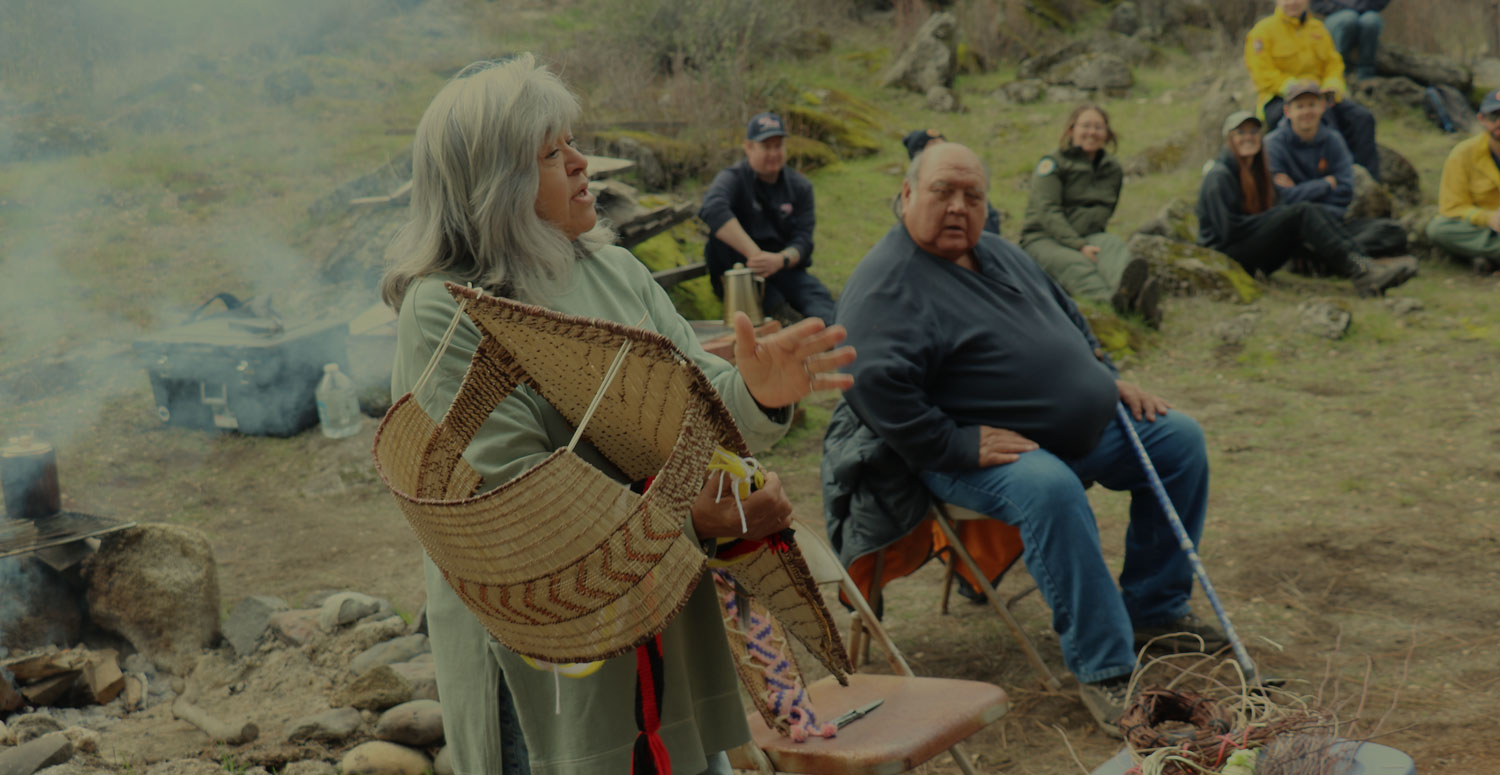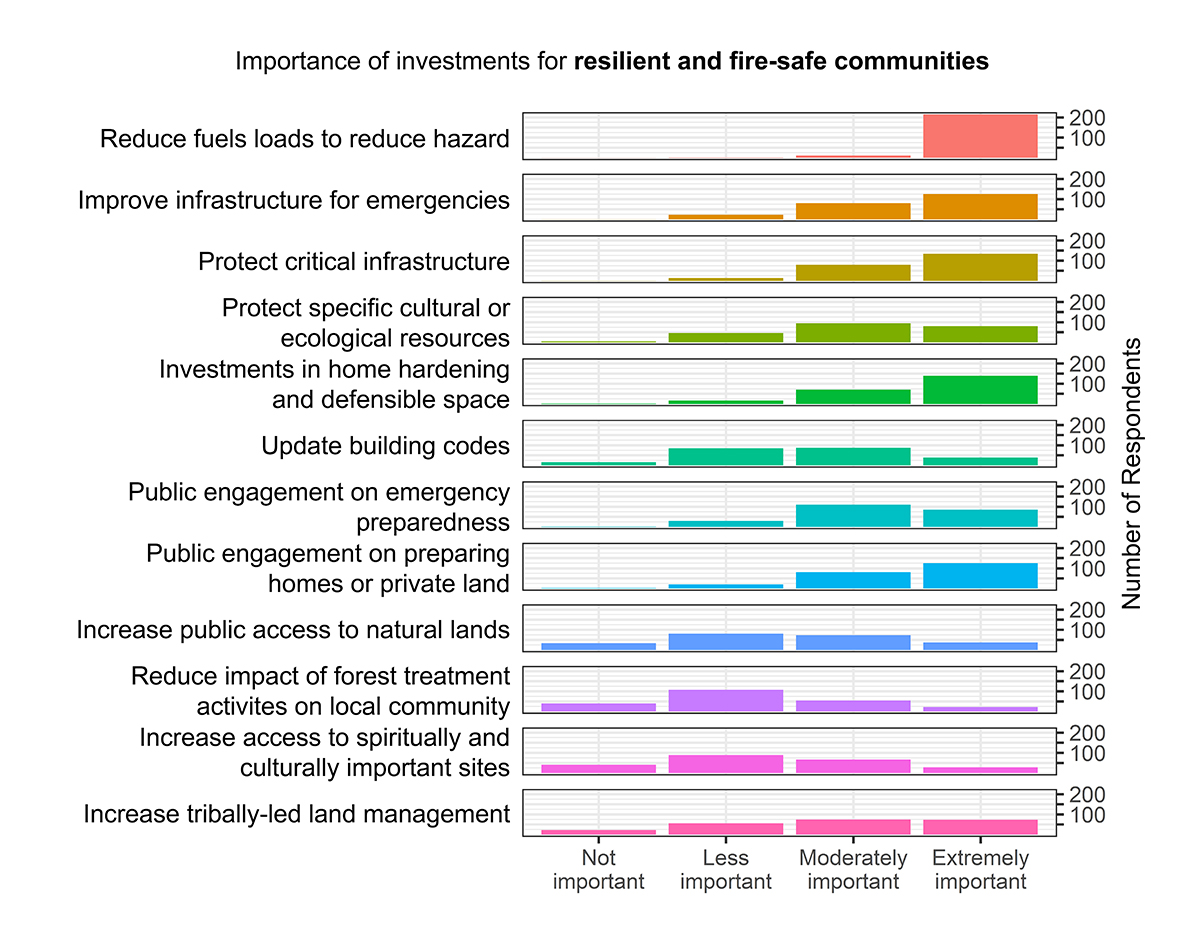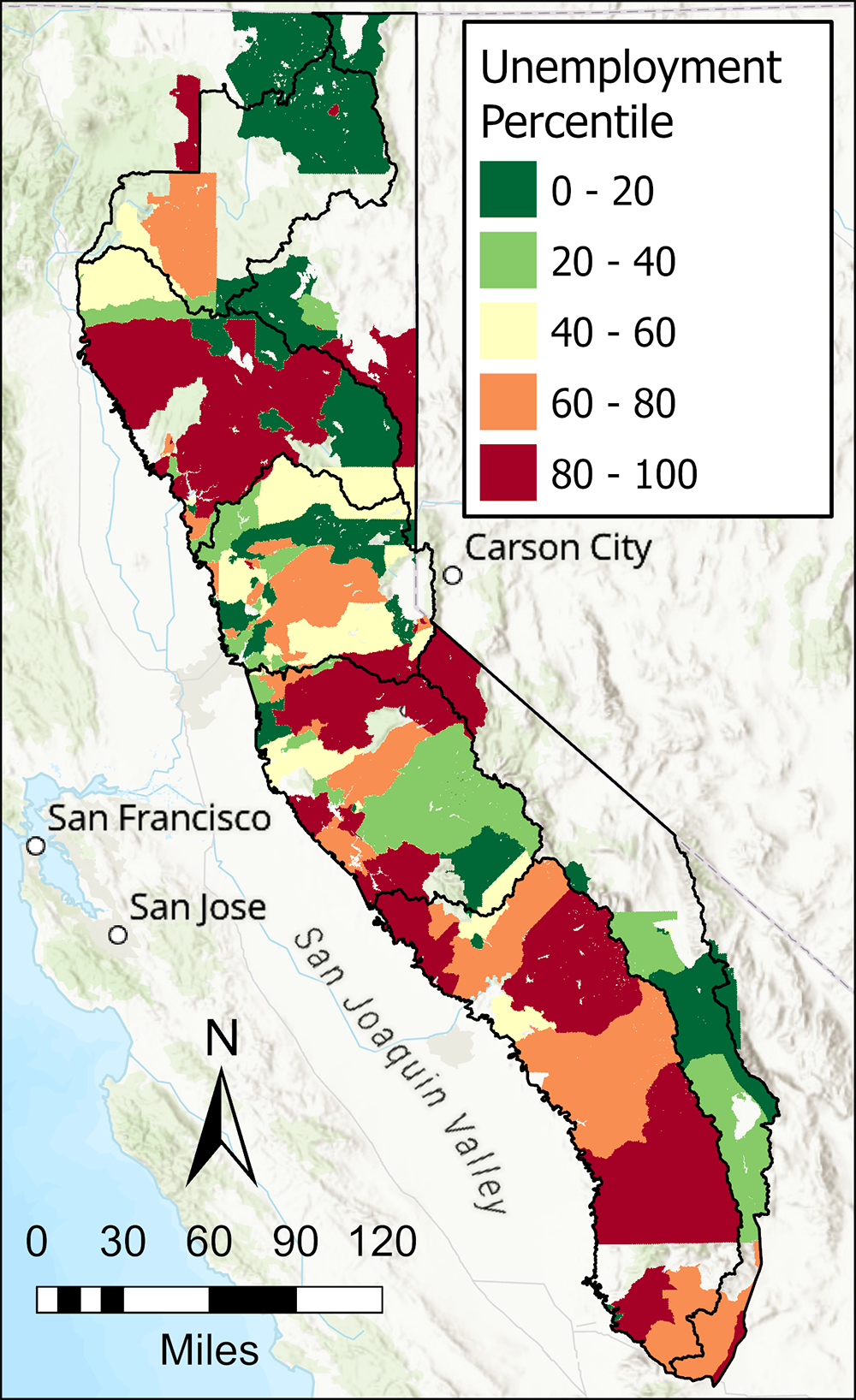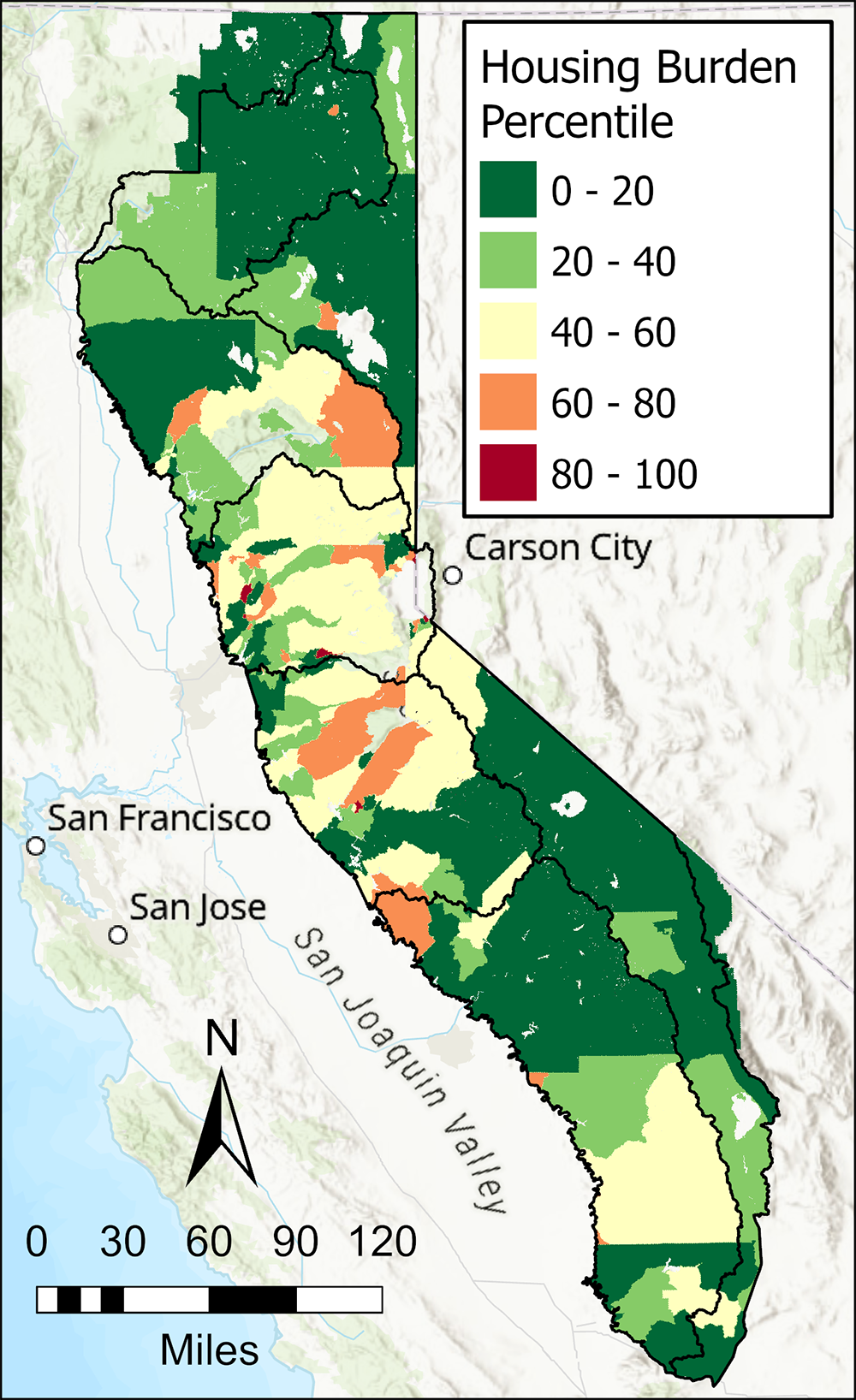Sierra Nevada Regional Profile
Resilient & Fire-Safe Communities

Overview
The increasing frequency, scale, and severity of wildfires, along with continuing human development in the wildland-urban interface poses serious risks to communities in the Sierra Nevada. To become more resilient and fire safe, communities need assistance and partnerships to implement fuel reduction programs, improve emergency preparedness, and update the built environment to be more fire resilient.
Individual households can be particularly at-risk and are crucial to identify and support. For instance:
- Low-income households may be less able to invest in emergency preparedness, including fire insurance, or have the capacity to recover from losses post-disaster.
- Seniors and those with reduced mobility, as well as households without access to personal vehicles, might have difficulty evacuating or accessing resources during emergencies.
- Many parts of the region do not have reliable internet coverage or cell reception, which may limit access to important public information, including public safety announcements.
To address these vulnerabilities, information delivery should be tailored to the local residents’ communication networks, including distributing printed materials at schools and churches, translating information into multiple languages, and leveraging community leaders to spread the word.
In the Sierra region, fire safe councils, prescribed burn associations, and University of California Cooperative Extension advisors, among others, are working to increase awareness of measures residents can take to make their personal properties and communities more fire-adapted.
Stakeholder Perspectives

There is strong consensus from stakeholders that reducing fuel loads to reduce wildfire hazard is the most important area of investment for making communities more resilient and fire-safe. Other areas of investment that survey respondents considered the most important include improving emergency infrastructure and protecting critical infrastructure, as well as investing in home hardening and defensible space. Public engagement on emergency preparedness and on preparing private property were also perceived as moderately to extremely important by most respondents. Multiple interviewees shared that fuel reduction on private land can be difficult due to the cost of the work, as well as owners’ lack of awareness of the management need.
A variety of solutions were suggested to increase public safety, including improving egress routes and community emergency planning, increasing access to resources during emergencies, and increasing and expediting support to communities after disaster occurs. One interviewee noted that enabling local communities to lead or be involved in restoration and response can empower communities and increase capacity to address issues across the region.
Resource Conditions
Resilient communities must be fire-adapted, as well as socially and culturally healthy; such qualities can be difficult to measure quantitatively, but unemployment and housing burden percentages are considered to be general metrics of the socioeconomic well-being of a community and reflect community capacity to participate in measures that reduce the risk of wildfire hazard and to recover from disturbance.

Unemployment (Map A) is measured as the percentage of the population over the age of 16 that does not have a job and is eligible for the labor force.

Housing burden (Map B) is the percent of households in a census tract that are both low-income (making less than 80% of the Housing & Urban Development Area Median Family Income) and pay more than 50% of their income to housing costs
